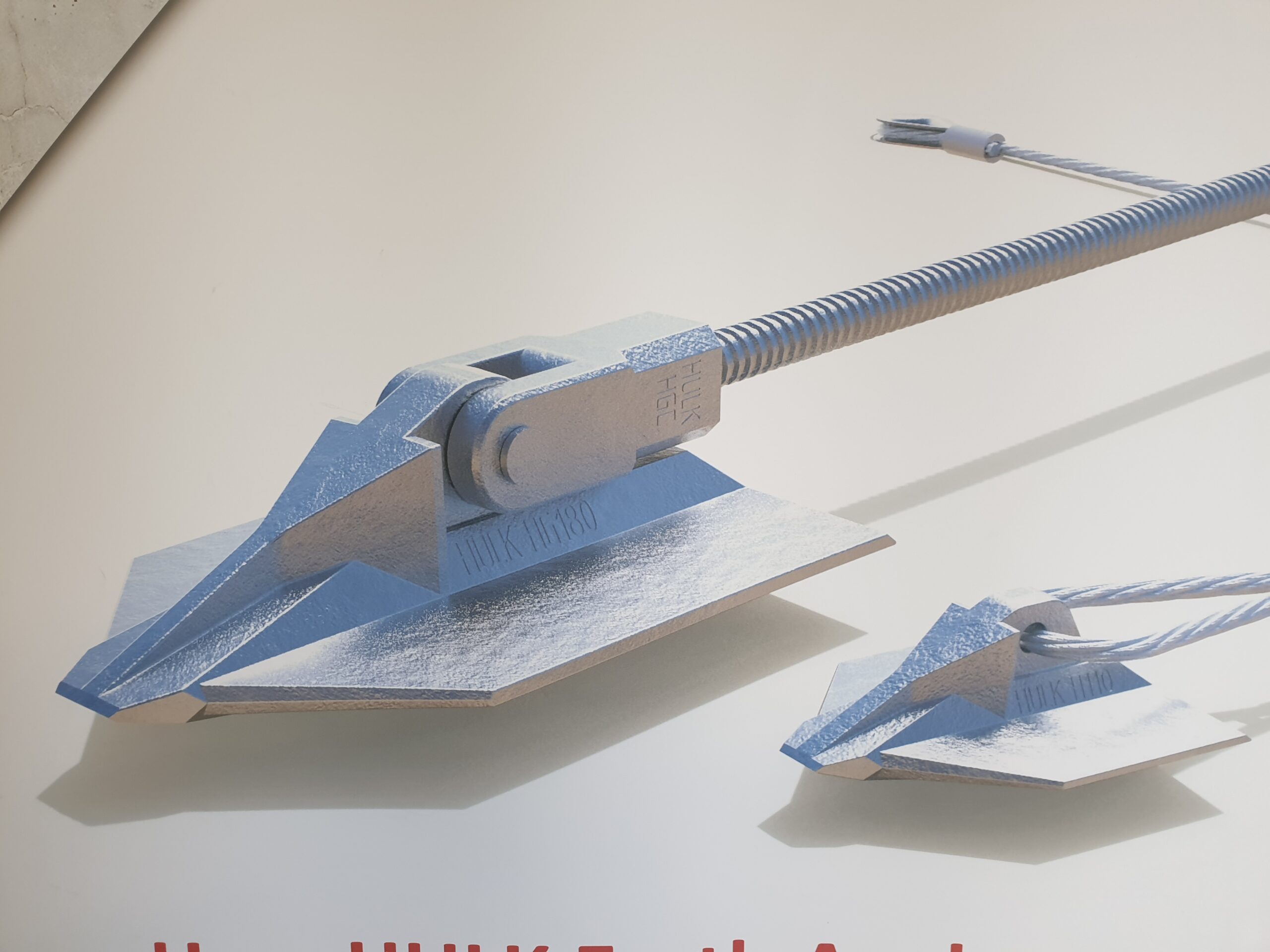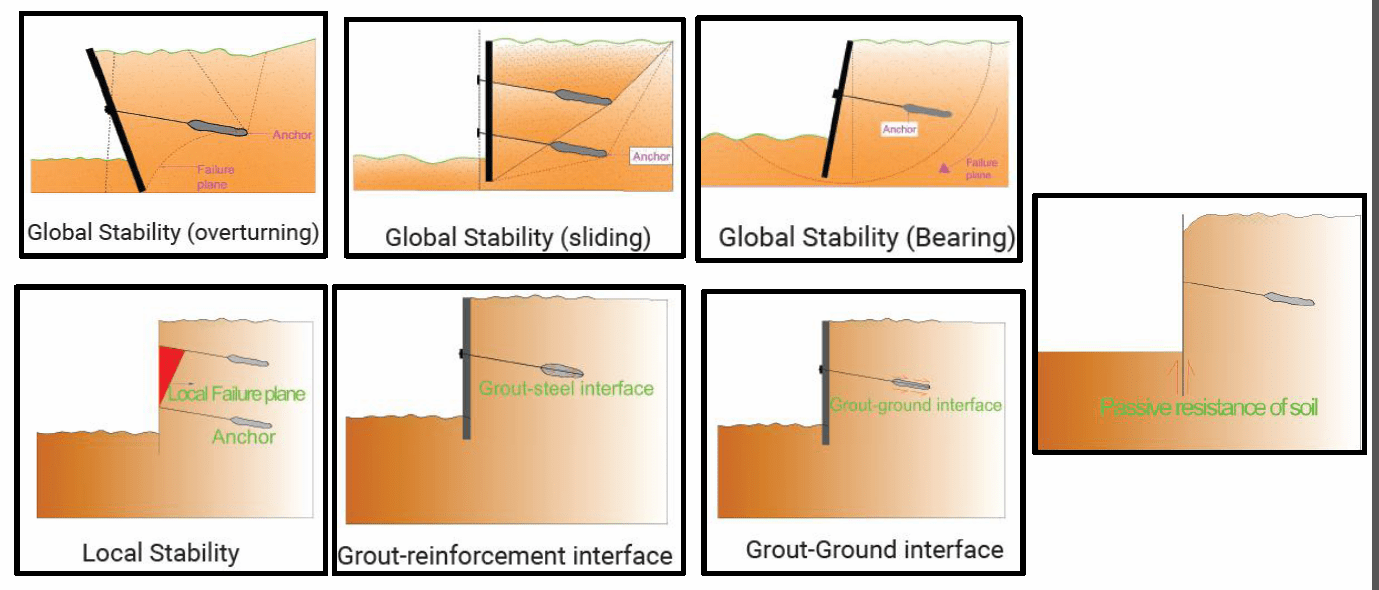The Science Behind soil anchoring solutions in Infrastructure Projects
Wiki Article
Just How Durable Earth Anchors Job: A Comprehensive Overview to Soil Anchoring Solutions
Heavy-duty Earth anchors play a crucial role in offering stability and support in various building and construction applications. By installing deeply right into the ground, they withstand side and vertical pressures effectively. Various sorts of anchors provide to numerous dirt problems, making them flexible. Recognizing their mechanics and installment techniques is necessary for making the most of performance. What elements influence their efficiency, and how do they contrast to typical methods? The solutions may amaze you.Comprehending Durable Earth Anchors
Sturdy Earth supports function as important elements in various building and construction and landscape design projects, supplying security and support in tough soil problems. These anchors function by being installed into the ground, where they stand up to upright and side pressures. Their design permits safe add-on to structures, guaranteeing they remain secured against dirt motion or outside loads.The efficiency of durable Earth supports mostly relies on the kind of soil and the anchor's installation depth. Appropriate installation methods are vital, as they establish the support's holding capability. Environmental aspects, such as wetness and freeze-thaw cycles, can likewise affect performance.These anchors are often used in applications ranging from protecting fencings and maintaining wall surfaces to stabilizing temporary structures during adverse climate condition. Recognizing the principles behind heavy-duty Earth anchors is crucial for specialists looking for to boost the longevity and safety and security of their tasks.Types of Heavy-Duty Earth Anchors
Various kinds of durable Earth anchors are developed to fulfill particular needs based upon soil conditions and job requirements. Helical supports, featuring screw-like blades, are efficient in softer dirts, using high tons capacities and simple setup. Driven anchors, which are inculcated the ground, appropriate for rocky surfaces and provide instant tons assistance. Tie-back anchors are frequently made use of in retaining wall applications, enabling lateral assistance by anchoring into the ground at an angle. One more kind is the cast-in-place support, perfect for concrete applications, as they are integrated right into foundations for boosted security. Ultimately, soil screw anchors are versatile alternatives that can be utilized in numerous dirt types, supplying trustworthy stress and compression capacities. Each kind offers distinctive applications, making certain stability and safety in building and construction and landscaping projects. Comprehending these alternatives enables informed decisions in selecting the ideal Earth anchoring solution.The Mechanics of Soil Anchoring

Comprehending the technicians of soil anchoring calls for an exam of numerous kinds of Earth anchors and their installation techniques. Each support kind offers distinct attributes that influence its efficiency in different dirt conditions. Correct installation methods are vital for optimizing the securing system's security and performance.
Kinds Of Earth Anchors
Earth anchors, essential parts in dirt anchoring systems, can be found in a number of types, each designed for particular applications and dirt conditions. One of the most usual types include screw supports, which are turned right into the ground, providing solid side resistance. Helical anchors include blades that enable effective installment in different dirt types, making them appropriate for both long-term and short-lived applications. Driven supports, generally made from steel, are hammered right into the dirt and are reliable in dense or rough settings. Auger anchors use a helical layout to help with setup in softer soils. Plate supports are composed of a flat plate hidden horizontally, distributing tons over a bigger area, ideal for applications needing high lots abilities in natural soils.Setup Techniques Explained
Correct setup techniques are important for the performance of soil anchoring systems. The process commonly starts with site assessment, verifying the chosen place can sustain the support's lots. After identifying the proper support kind, appropriate hole deepness and angle need to be established. The setup involves driving the anchor right into the ground using specific equipment, such as hydraulic or hand-operated motorists, to achieve finest embedment. Post-installation, tensioning the support is essential to guarantee security; this is frequently confirmed with tons testing. In addition, bordering soil conditions ought to be monitored to stop displacement. Complying with these methods not just enhances the support's performance however additionally lengthens its lifespan, providing trusted assistance for various applications.Applications of Heavy-Duty Earth Anchors
While durable Earth anchors are usually connected with construction and landscape design, their adaptability expands to a variety of applications throughout different markets. In civil design, they provide important assistance for retaining wall surfaces, making sure stability in areas susceptible to dirt disintegration. The marine sector utilizes these supports for safeguarding anchors and marinas, preventing movement brought on by currents and trends. In addition, in the telecom market, sturdy Earth anchors are considerable for supporting cell towers and various other high frameworks against wind pressures. Agricultural applications additionally profit, as these anchors can safeguard frameworks like greenhouses and animals secure fencing, guaranteeing they withstand harsh weather. Furthermore, in sustainable power tasks, such as wind ranches, Earth supports play an important role in securing generator structures, enhancing general security and efficiency. This wide array of applications highlights the flexibility and dependability of sturdy Earth anchors across numerous fields.Advantages Over Conventional Anchoring Methods
Although conventional anchoring approaches have actually long been depended upon for security, durable Earth supports use significant advantages that improve efficiency and effectiveness. One major benefit is their remarkable load-bearing capacity, which enables them to withstand higher forces without failure. This toughness makes them ideal for demanding applications, such as in building and energy installations.Additionally, heavy-duty Earth supports are made for deeper setup, providing higher security in various soil problems, including sandy or loosened dirts. Their resistance to corrosion and ecological factors guarantees a longer life expectancy and reduced maintenance expenses contrasted to standard methods.Moreover, these supports can be installed with very little disruption to the surrounding location, protecting the honesty of the landscape. Generally, heavy-duty Earth supports provide a reliable and reliable service for securing requirements, exceeding the constraints frequently connected with standard anchoring strategies.Installation Refine and Ideal Practices
The installment procedure for dirt securing options starts with complete preparation and website evaluation to ensure peak efficiency. Following this, a detailed installment overview supplies clear directions for efficient application (soil anchoring solutions). Abiding by these best practices is vital for accomplishing trustworthy and resilient anchoring outcomesPreparation and Site Analysis
Efficient preparation and extensive site analysis are important actions in the installment of soil securing options. Prior to installation, the dirt type must be assessed to identify its bearing capacity and suitability for anchoring. Performing a geotechnical survey can offer essential details regarding soil make-up, moisture levels, and prospective ground movement. Furthermore, determining existing structures, page plants, and utilities is crucial to prevent interference during installation. The area must be removed of particles and obstacles to ensure secure accessibility for devices. Climate conditions need to likewise be kept an eye on, as adverse conditions can influence both safety and installation effectiveness. By carefully preparing the website and evaluating all appropriate elements, the chance of successful anchor efficiency is websites considerably raised.Step-by-Step Installation Guide
A comprehensive setup process is essential for attaining optimal performance of soil anchoring remedies. The installation begins with choosing the ideal anchor type and ensuring the site is free from particles. Next off, proper hole positioning is identified based upon tons needs. Once the area is developed, openings are drilled to the defined deepness and size making use of the correct tools. The anchor is after that put right into the opening, seeing to it it is aligned properly. After protecting the anchor, soil is backfilled and compacted to improve security. It is necessary to comply with maker guidelines throughout the process. A post-installation assessment verifies that the anchors are properly located and working as planned, supplying reliable assistance for the intended application.
Maintenance and Inspection of Earth Anchors
Routine upkeep and evaluation of Earth supports are vital for guaranteeing long-term efficiency and stability. Routine checks enable the very early detection of concerns such as rust, loosening up, or soil activity. Inspectors need to seek indications of corrosion or degradation on the support elements, specifically at the connection factors. In addition, the surrounding dirt should be examined for disintegration or changes in wetness content, which can impact support effectiveness.It is recommended to establish a regular assessment timetable, ideally at least yearly, depending on environmental problems. Throughout inspections, all visible elements need to be cleaned to eliminate dust or particles that can hide prospective problems. Any kind of indicators of distress, such as tilting frameworks or uncommon settling, need to motivate immediate evaluation. Appropriate paperwork of evaluations can assist in tracking support performance gradually and help with timely upkeep activities, making certain the supports continue to be trusted and useful.Regularly Asked Inquiries
What Materials Are Heavy-Duty Earth Anchors Generally Made From?
Heavy-duty Earth supports are commonly constructed from sturdy products such as galvanized steel or stainless steel, ensuring toughness and resistance to deterioration. These products offer long-lasting assistance and stability in numerous dirt conditions and applications.How Do Dirt Conditions Impact Anchor Efficiency?
Soil conditions substantially influence anchor efficiency. Elements such as dirt type, dampness web content, and compaction impact the support's hold and security, with cohesive soils usually providing far better resistance than loose or sandy soils, influencing overall performance.
Can Heavy-Duty Earth Anchors Be Reused After Elimination?
Heavy-duty Earth supports can be recycled after removal, supplied they try these out are evaluated for damages and wear. Proper cleaning and upkeep enhance their durability, making certain efficient efficiency in subsequent setups when problems permit for risk-free reinstallation.What Are the Ecological Impacts of Utilizing Earth Anchors?
The ecological influences of utilizing Earth supports consist of potential soil disturbance, disturbance of regional environments, and feasible contamination of groundwater. However, if utilized responsibly, their advantages usually outweigh these issues, promoting security in various applications.Exactly how Do I Choose the Right Support for My Task?

Report this wiki page